I’ve done pages on Riverdale before (notably, here), it’s one of my favorite Bronx sites, albeit a little hilly. Strike that, it’s a lot hilly. But I have been on a little bit of a health phase this year, cutting out several edible favorites and buying and riding a new bike while continuing my FNY journeys to adventure. In summer 2017 I was also doing a ForgottenTour in Riverdale as I had done in both 2003 and again in 2011, and so I was traipsing around Riverdale, up hills and down, looking for new highlights. Those previous tours had been quite lengthy, extending to Wave Hill and Spuyten Duyvil (the latter in the rain) so in 2017, I stuck to the Van Cortlandt Park area for the tour (I plan on separate western Riverdale and Spuyten Duyvil tours in the future that would meet at Metro-North stops, which would alleviate all the uphill climbing).
Today though, I decided to set off from Riverdale north into Fieldston. While assessing the area for the 2011 tour we met some opposition from locals, who told us Fieldston was semi-private and special permission would have to be obtained to tour there. I took the easy way and skirted the area. However, today, I figured a lone cameramen would pose no problems and sure enough, no one complained to me about it on a sleepy July Saturday.
GOOGLE MAP: RIVERDALE & FIELDSTON
Much of Riverdale and Fieldston, the adjacent semi-private neighborhood, was a forest owned by War of 1812 veteran Major Joseph Delafield, who in 1829 purchased 312 acres in the area west to the Hudson River and built a lime quarry and kiln. His son Edward constructed an elegant mansion that he named Fieldston Hill (which still stands on West 246th Street), and the major’s grandsons brought in architect Dwight James Baum, who designed dozens of homes in Riverdale and Fieldston in different styles. Fiorello LaGuardia was a Fieldston resident and read the comics on the radio during a newspaper strike from his study on Goodridge Avenue. And, John F. Kennedy lived in a house that still stands on Independence Avenue and West 252nd Street when he was a boy, between 1927 and 1928, when family patriarch Joseph Kennedy briefly moved his family to Riverdale. As stated, today it’s a semiprivate neighborhood. It was designated as a Landmarked neighborhood by the Landmarks Preservation Commission in 2006.

I did not have the time or strength on his brain-blisteringly hot July day to cover all of Fieldston (and that is a task better done in the cold months when lack of foliage makes observing the architecture easier). Instead I went up Waldo Avenue and Fieldston Road through Fieldston, passing the Henry Hudson Parkway into North Riverdale and ultimately the south end of Yonkers.
Gateposts at Waldo Avenue and Manhattan College Parkway delineate the district. Waldo Avenue (the name reminds me of Darla’s bespectacled admirer in the Little Rascals films) was originally built through the property of Waldo Hutchins.
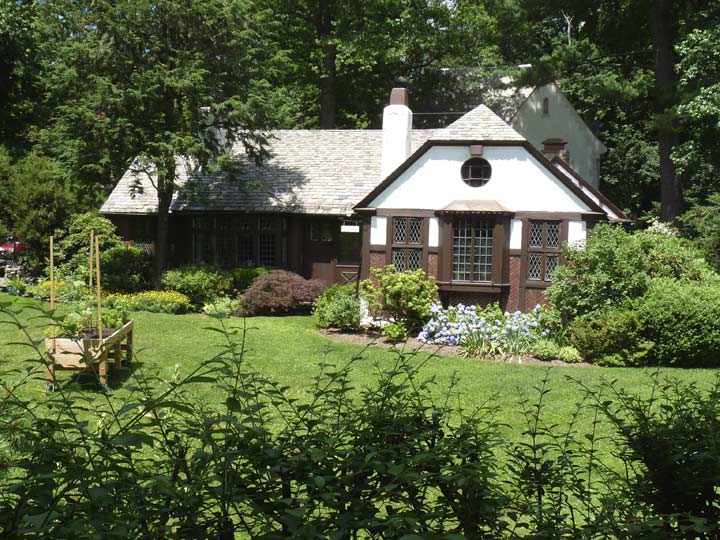
4405 Waldo, at the bend of Manhattan College Parkway, was constructed in 1928 and is one of the many Riverdale-Fieldston buildings by Dwight James Baum for engineer Albert Wheeler. According to the LPC designation report, the Fieldston Property Owners Association set a large number of guidelines for residential construction in the developing neighborhood, that nonetheless allowed for a variety of interesting styles. The report describes this residence as Medieval Revival.
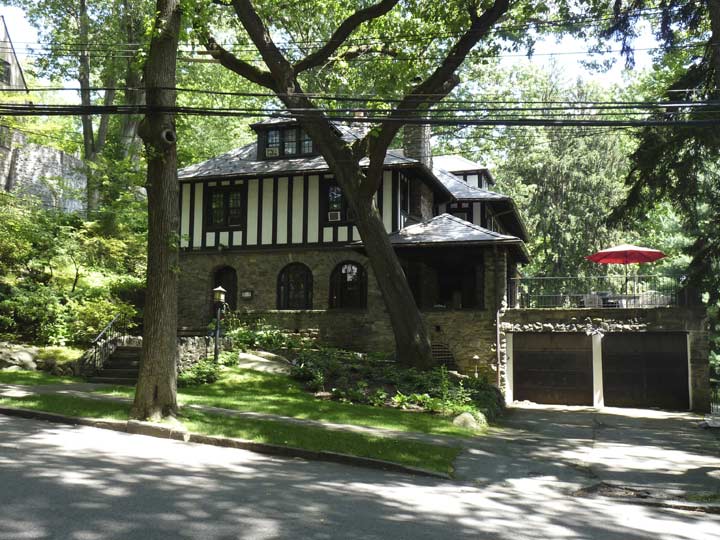
4418 Waldo was constructed from 1911-1912 by architect Nathaniel Vickers in the Craftsman style for lawyer Frederick Camp and was one of the first residences built in Fieldston. “With its main facade overlooking Waldo Avenue, this large house is characterized by it complex plan and roofline consisting of intersecting wings of varying heights. Its solid stone base, low hipped roofs with overhanging eaves, exposed rafters, hipped dormers, and tall, fieldstone chimneys are hallmarks of the Craftsman style.”–LPC Report
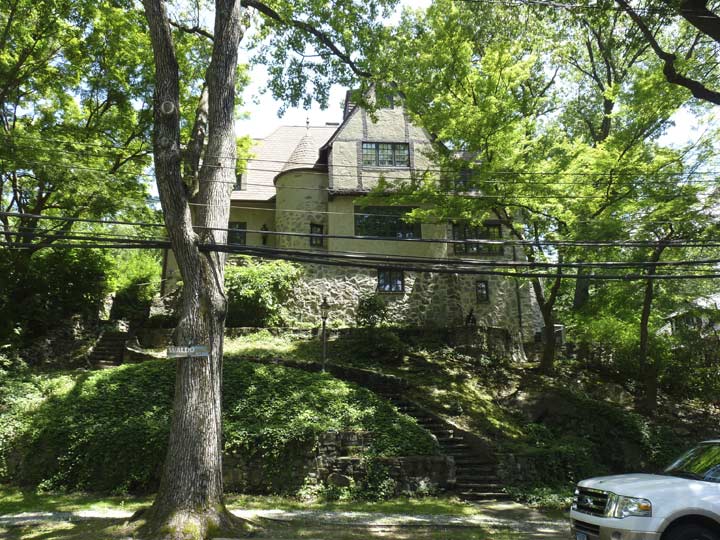
Next door is a Tudor-style palace at #4428 Waldo that was built 12 years after its next door neighbor, designed by architect Julius Gregory for Olinda Camp, an assistant high school principal (I imagine they were paid well in the 1920s). Its numerous gables and brick tower are prominent elements of Tudor revival buildings.

4515 Waldo Avenue, Tudor Revival built in 1928 for Dr. Frank Melany.

Another Craftsman is this classic at 4521 Waldo, developed in 1911-12 by Edward Delafield, a scion of the original landholding family of Fieldston. “With its main façade oriented away from the street, the house is distinguished by Craftsman-style characteristics, such as its solid fieldstone base, bracketed second story, segmental fenestration, exposed roof rafters, and tall, stucco-covered chimney.” –LPC designation report

At College Road, the corner street signs are mounted perpendicularly — this is very unusual for New York City. The road could be named for Manhattan College, the Barnard School, the Horace Mann School, or the nearby Riverdale Country School.
Fieldston has a set of street signs nailed into trees. Few of these remain; nailing things into trees isn’t healthy for the trees.
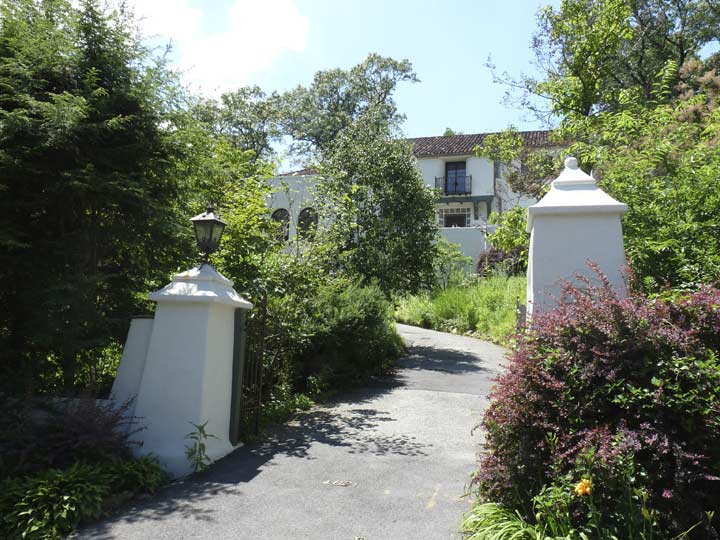
Set way back from the street behind a stone fence, the sprawling 4621 Waldo Avenue is a Mediterranean Revival building constructed in 1928, and designed by Dwight James Baum for Elisa Galban. Its notable features are its stucco-coated facades, clay-tile-covered hipped and gable-on-hip roofs, hooded stucco-covered chimneys, main entrance door surrounded by ceramic tile, historic battened wood shutters, and ornate wrought-iron balcony.Off on the right side is some schist rock that was incorporated into the fence.
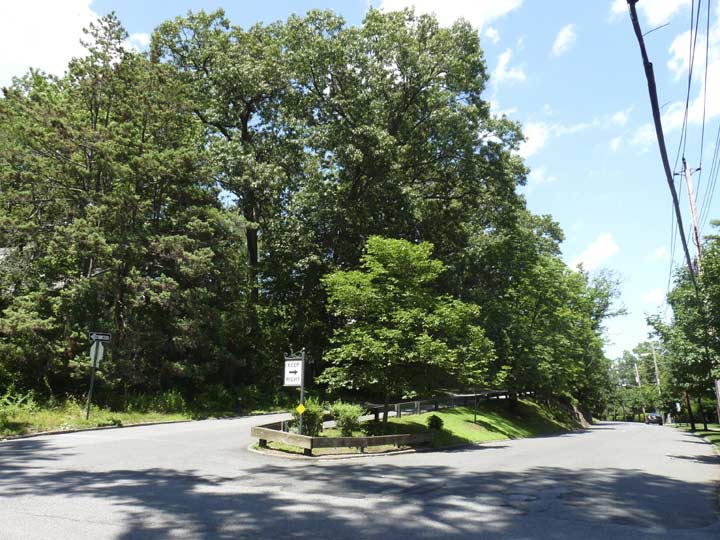
Fieldston Road looking north at West 250th. By the way this is the very same street numbering system that begins at East 1st Street and 1st Avenue in the East Village. This far north, numbered streets twist and turn and are lined with foliage and multimillion dollar dwellings and mansions.
Like Riverdale Avenue, Fieldston Road was laid out along the crest of a hill for several blocks, and so the southbound lane is on a higher level than the northbound lane.
The Riverdale Country School on Fieldston Road south of the Henry Hudson Parkway, founded in 1907 by Frank Sutliff Hackett (1878–1952) is a kindergarten through Grade 12 private school, recently ranked the sixth best private school in NYC by Niche‘s 2017 Private School Rankings. Future President John F; Kennedy attended the school1927 to 1930 while residing in Riverdale. Appearing on Fordham Road during a rally in 1960, Kennedy claimed to be the only Presidential candidate who had lived in the Bronx.
This isn’t the most representative picture of the architecture on the grounds, but remember, I’m shooting from outside the gate.
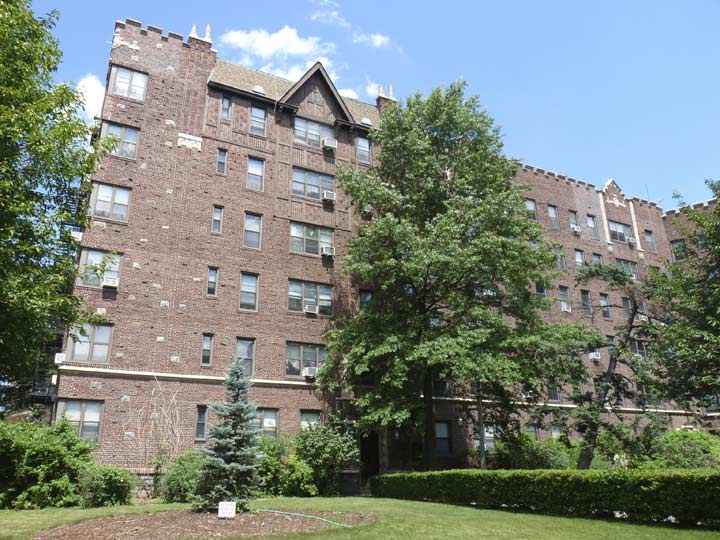
Now north of the LPC designated district, this is the nonetheless impressive apartment complex constructed in 1939, Fieldston Manor, at 5400 Fieldston. In the 1970s, Cold War intrigue was centered on a small house across Fieldston Road.
One of Riverdale’s many schist rock outcroppings has been incorporated into the Manor’s property fencing.
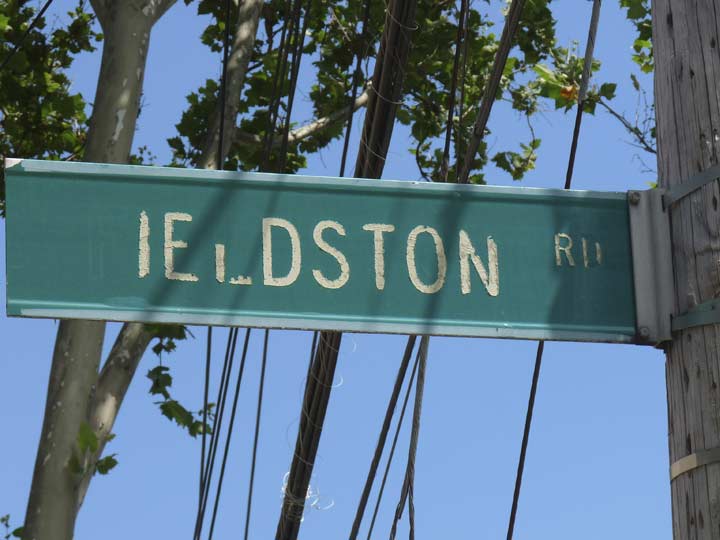
From its condition this appears to be one of the first green and white street signs (at West 256th) installed by the Department of Transportation in the 1980s. Formerly Bronx street signs were blue with white letters.
At Mosholu Avenue and Fieldston Road is a remaining mechanism formerly used by the Department of Traffic, now Transportation, to measure traffic volume. They haven’t worked for a few decades, so birds find them a handy dandy place to put nests.
There are a number of places in the Bronx named “Mosholu.” When I first encountered it, I thought it was a Japanese name, but instead, it was the Algonquin name of a rural brook running through the heart of what became the Bronx’ Spuyten Duyvil and Riverdale neighborhoods.
Thorne Lane is a one-block, mostly unpaved road running between Spencer and Huxley Avenues (with a dead-end piece on Fieldston Road) north of Mosholu Avenue. No houses or property face it, and it doesn’t appear on most paper maps. Brother’s Thomas and William Thorn ran a farm feed business in nearby Spuyten Duyvil and perhaps they resided in the area.

You could probably cut your thumb on the peaks of these twin Tudors at Spender Avenue and West 259th Street.
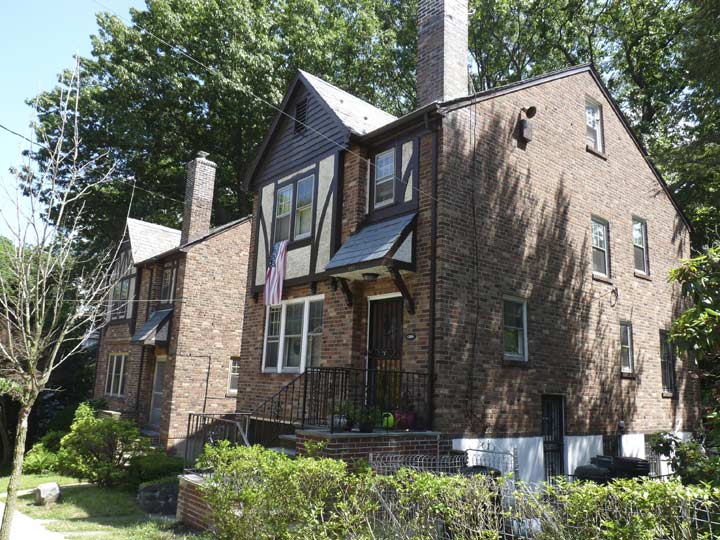
Modern updates on the Tudor theme in these solid brick dwellings on East 260th between Spencer and Huxley Avenues.
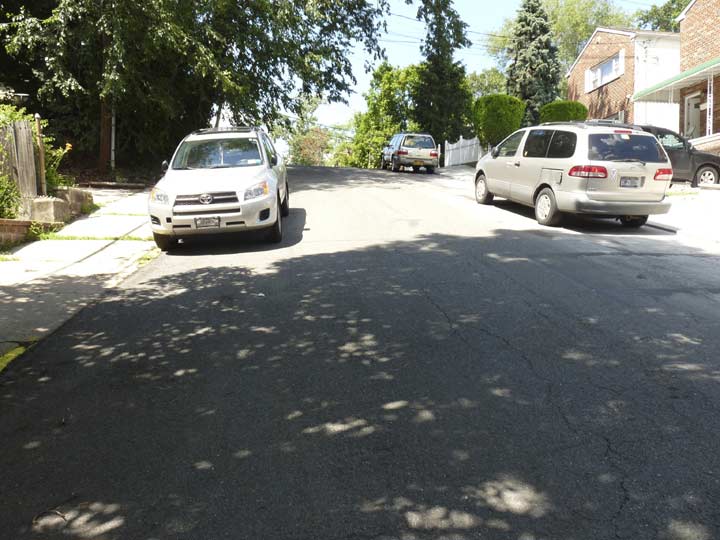
The hill on Huxley north of West 260th is short, but San Francisco steep. In the early days of Riverdale this was known as Pigeon Hill.

There are a pair of dead-end streets, Whalen Street and Forster Place (shown here) on Huxley between West 260th and 261st.
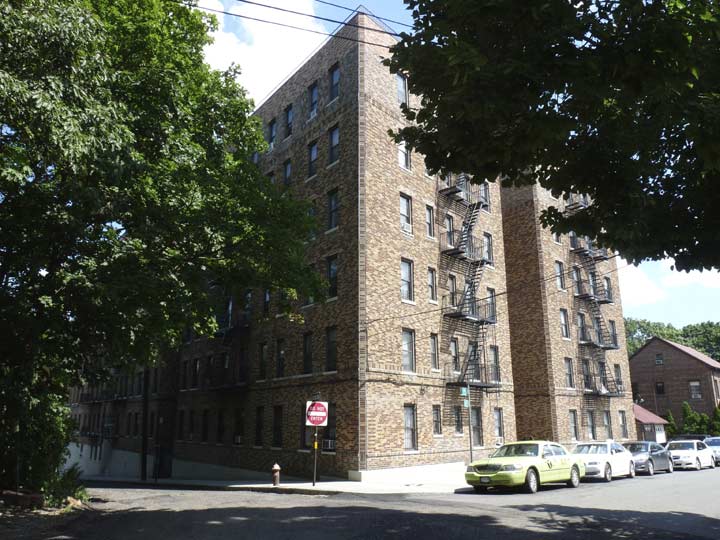
Handsome apartment building with multicolored brick facade at Huxley and West 262nd — which is unpaved on the opposite side.
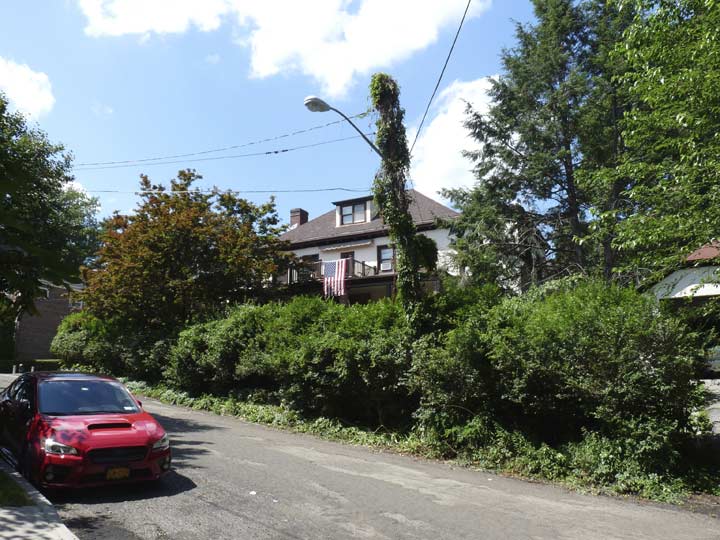
As West 262nd winds up Pigeon Hill we are getting perilously close to Yonkers. Here a telephone pole has been ivied over.

One of my purposes in invading this stretch was to check on the condition of an ancient, rusted signpost at the Riverdale-Yonkers border, Leighton Avenue and Spencer Place. Earlier in 2017, I noted my disappointment that the enamel signs have been removed, either by the City of Yonkers or by a souvenir hunter.
Once in Yonkers, I noticed that the lamps had been outfitted with large, ungainly Philips LED lamps. One was even placed on a octagonal Bronx lamppost, but that was either inadventent or that lamp is controlled by whatever agency lights Yonkers.
On this stretch of Broadway in Yonkers the street signs are large, white and blue. Otherwise in Yonkers the street signs closely resemble NYC’s green and white signs.
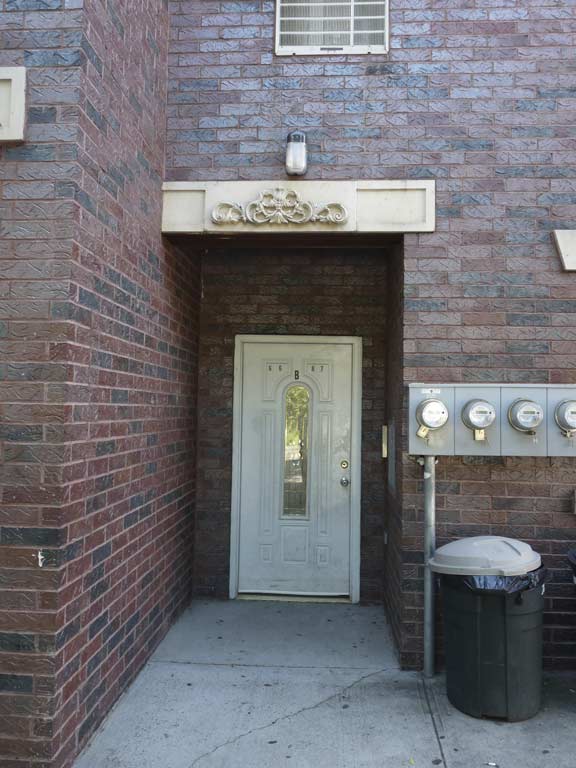
The highest numbered address on Broadway in the Bronx, #6687.
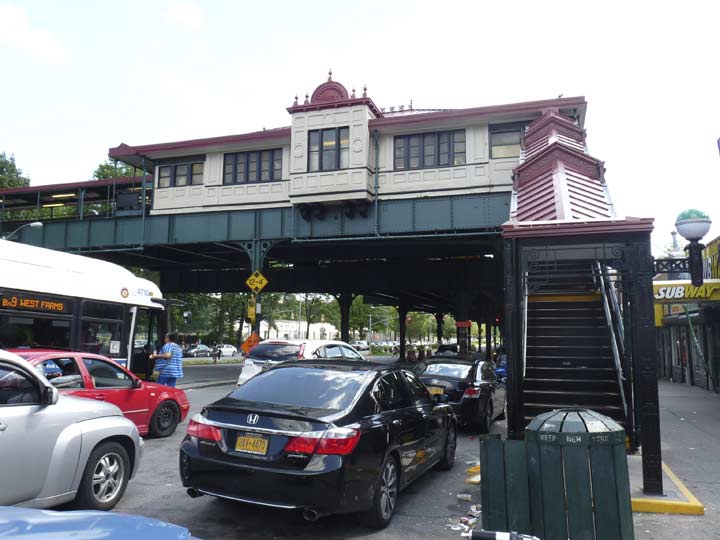
Time to kick it in the head for the day. A short bus ride delivered me to the West 242nd street station for the #1 train, one of my favorites in the subways. I plan a short feature on it.
Check out the ForgottenBook, take a look at the gift shop, and as always, “comment…as you see fit.”
9/30/17

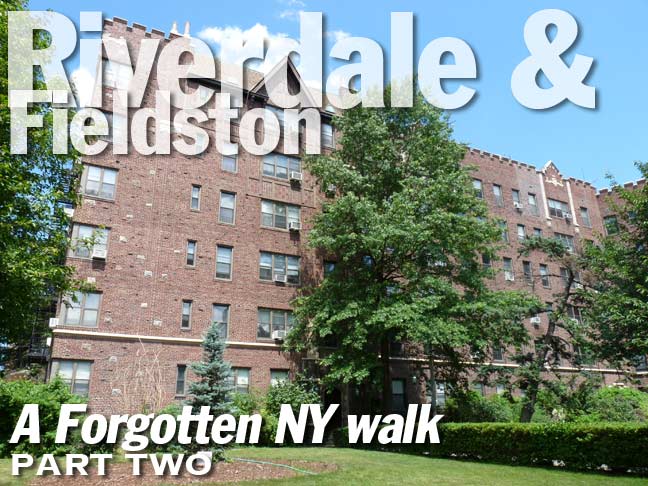
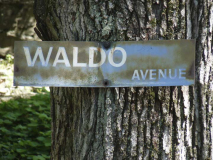

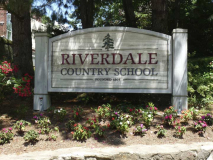
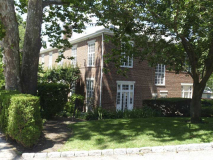
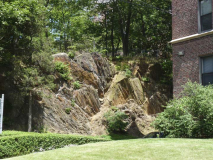

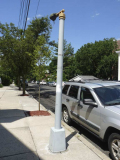
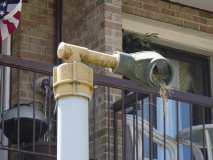
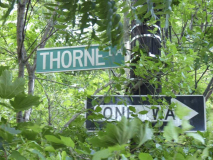
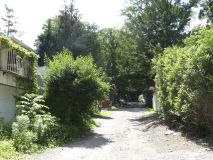

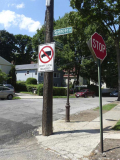
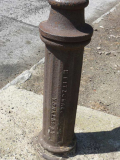
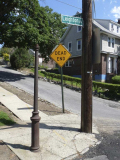
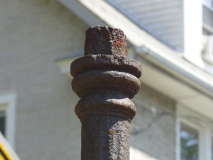
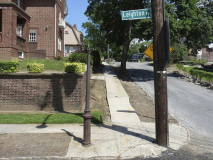
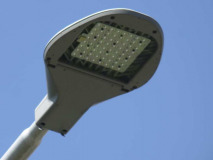
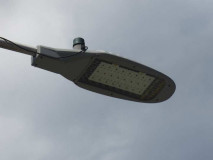
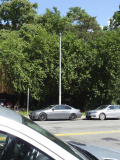
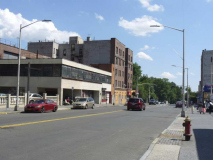
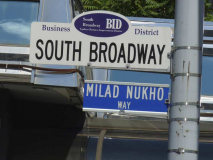

25 comments
I think you may have placed the wrong pictures for some of these considering that both Riverdale and Fieldston don’t have a subway above 242nd Street, which is where the 1 train ends, though the Hudson Line of Metro-North RR does run along Hudson River.
updated
Another lovely FNY tour! Many thanks!
Now that the remote outpost of Riverdale/Fieldston has been covered, how about staying closer to home & giving us a feature Jamaica Estates/Holliswood? The topography & the architecture are similar & your trip would be considerably shorter.
I think that some of the pictures posted here were misplaced. They seem to be from abandoned subway stations.
Kevin,
Something is wrong with a lot of the pictures here. They don’t appear to have anything to do with the text and mostly look like abandoned subway stations. One thing conspicuously absent in the Fieldston neighborhood is any sort of subway, above or below ground.
Thanks — updated
Please check your links. Many pictures were of the lower 42nd Street subway station.
Thanks — updated
While your pictures of street signs are fascinating, you seem to have missed one of the most interesting things about Fieldstone. The pond.
https://hiddenwatersblog.wordpress.com/2016/12/02/fieldpond/
I can’t walk everywhere, but will return to Fieldston presently.
How does a neighborhood get to be “semi-private”? Do the lot owners pay for the maintenance of the streets and utilities?
My understanding is that most of these private streets were created by developers who subdivided larger pieces of property, building both houses and streets on them. They are owned by the developer, the homeowners association, or something like it. I would surmise that many such streets were designated by the city or its predecessors when laying out the street grids on farms or woods and were taken by eminent domain or by agreement with the developer when the area was developed. But not all such streets became public. I found a number of articles about and notices for these situations in the Brooklyn Public Library’s searchable Brooklyn Daily Eagle archives, which I think are accessible for free if you have a library card from any of the NYC three systems. Examples of private streets range from small streets like Sylvan Terrace in Washington Heights and Washington Mews in the Village to neighborhoods like Seagate in Coney Island and Forest Hills Gardens as well as many of the streets in large developments like Stuy Town and Parkchester. With respect to large developments, those built on large lots like Parkchester or Luna Park Houses never needed to city to agree to the streets being private whereas those like Stuy Town involved the city demapping the public streets and turning them over to the developer. The latter transactions, along with associated urban renewal documents, would be recorded at the City Register.
With a number of them, the property lines of the adjacent houses run to the middle of the street. The city does not maintain the pavement or the water and sewer pipes, and does not sweep the streets. (DoS does collect trash.) Issues come up from time to time when water and sewer lines need to be repaired or replaced at high cost to the owners. Here is a recent article about that issue https://ny.curbed.com/2017/4/17/15329808/nyc-private-streets-city-ownership but if you do a search for private streets nyc, you’ll find others. My recollection of an article about this from a while ago is that, if the owners need the city to do the projects to maintain the streets and pipes, these streets must be opened to the public (probably including parking) and subject to street sweeping.
We live on a formerly private street in Astoria. The old-timers say that the city took over maintenance (paving, water, sewage repairs etc.) in return for opening the street for traffic, parking etc.
Do your research before you get there. Judging from the pictures you probably walked right by the road it’s on. You didn’t know it was there because you didn’t do the research.
I am sorry I cannot be more comprehensive on one page. I humbly entreat you for patience with my meager efforts.
sar·casm
ˈsärˌkazəm/Submit
noun
the use of irony to mock or convey contempt.
“his voice, hardened by sarcasm, could not hide his resentment”
synonyms: derision, mockery, ridicule, scorn, sneering, scoffing;
When you do the work that Kevin does, then you can complain.
Kevin – thank you for what you do.
Thanks again..Great pictures….
I moved out of Riverdale over twenty years ago and now I’m homesick!
Another bit of “Mosholu” trivia, especially for Godfather fans: It is also the name of the ship on which young Vito arrives at Ellis Island in 1901.
Kevin: Thanks for the great tour of an area of NYC that I knew very little about!
Yes I noticed that also when young Vito was at the railing of the ship he was on…. the passing ship’s name
was as clear as can be…… Mosholu….
Something you don’t see much anymore are the concrete strip driveways on the twin Tudors at Spencer and 259th. Instead of a full-width paved driveway leading from the street to the garage there are concrete strips for the vehicle’s tires with grass in the middle. Distinctive, but rather impractical as you can’t really park in the driveway on a regular basis without kiboshing the grass.
Given the length of the grass in the median I suspect the owners of the Tudor on the right do not use the driveway or garage. It was that way in the August 2012 Google Street View too.
Given Kevin’s phenomenal body of work, June’s comment is picky and completely out of line.
Pictures are very good bring back memories of
Growing up on 242nd Broadway .Keep up the good work.Regards to all.